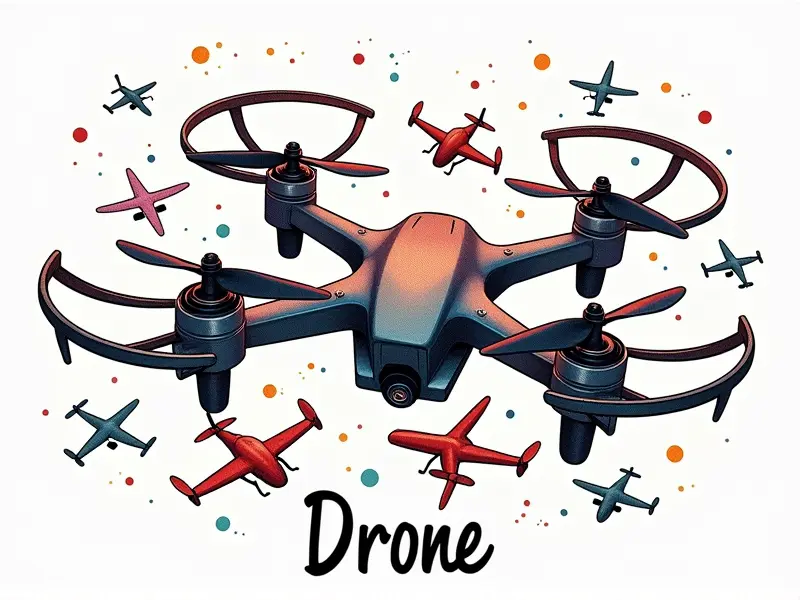Can FPV drones fly at night?

Legalities of Night FPV Drone Flight
Flying First-Person View (FPV) drones at night presents unique challenges and opportunities. However, it is essential to understand the legal framework surrounding nighttime drone operations before taking flight. In many countries, including the United States, flying an FPV drone after sunset requires specific permissions from aviation authorities such as the Federal Aviation Administration (FAA). The FAA's Part 107 regulations mandate that operators must obtain a waiver for night flights and adhere to additional safety guidelines.
Similar restrictions exist in other countries like Canada, where Transport Canada requires pilots to follow strict nighttime operation rules. In Europe, the European Union Aviation Safety Agency (EASA) also imposes specific requirements for flying drones at night, including obtaining necessary permissions and adhering to operational limitations.
Safety Tips for Night FPV Drone Operations
Operating an FPV drone at night presents several risks that can be mitigated with proper safety measures. One of the primary concerns is maintaining situational awareness in low-light conditions. Pilots should utilize high-quality LED lighting on their drones to enhance visibility and avoid collisions with obstacles.
- Use LED lights: Install bright, multi-colored LEDs that can be easily seen from a distance.
- Plan your route carefully: Avoid flying over densely populated areas or near other aircraft to minimize risks.
- Check weather conditions: Ensure there are no adverse weather conditions like fog, rain, or strong winds that could compromise flight safety.
Best FPV Gear for Nighttime Flying
To maximize the enjoyment and performance of night flying with an FPV drone, investing in specialized gear is crucial. High-quality goggles and transmitters are essential components to enhance visibility and control during nighttime operations.
- FPV Goggles: Choose models like the Fatshark Dominator HD2 or the HDO for superior night vision capabilities.
- LED Lighting Systems: Equip your drone with multi-color LED lights such as those from Betaflight or OpenTX to ensure visibility.
Challenges of Night FPV Drone Racing
Nighttime FPV racing introduces a variety of challenges that pilots must overcome. Visibility is significantly reduced, making it harder to navigate through courses and avoid obstacles. Additionally, the risk of collisions with other drones or fixed objects increases.
- Increased Risk: Higher probability of accidents due to poor visibility.
- Navigational Difficulties: Harder to see race gates and markers clearly in darkness.
Visibility Techniques for Night FPV Flying
To improve visibility during night flights, pilots can employ several techniques. Using infrared cameras or thermal imaging technology can help detect obstacles that are not visible under normal lighting conditions. Additionally, marking course boundaries with reflective tape or glow sticks enhances navigation.
- Infrared Cameras: Utilize IR cameras to see through the dark and spot potential hazards.
- Glow Sticks & Reflective Tape: Use these materials to mark race paths clearly visible under low-light conditions.
Battery Life in Night vs Day FPV Flights
The duration of battery life for FPV drones can vary significantly between day and night flights. Nighttime operations often require more power due to the additional load from LED lights, which are crucial for visibility but consume extra energy.
- LED Lights: Higher power consumption during nighttime flights necessitates larger batteries or multiple battery packs.
- Flight Time: Expect shorter flight times at night compared to daytime due to increased energy usage.
Enhancing Night Vision for FPV Pilots
Pilots can enhance their night vision capabilities through various methods. Using specialized goggles designed for low-light conditions, such as the Fatshark Dominator HD2, provides a significant advantage. Additionally, pilots should avoid looking directly at bright lights before taking off to prevent temporary blindness.
- Specialized Goggles: Invest in high-quality FPV goggles optimized for night vision.
- Avoid Bright Lights: Steer clear of intense light sources prior to flight to preserve night vision.
Regulations on Operating FPV Drones at Night
The legal framework governing nighttime drone operations varies by country. In the United States, pilots must apply for a waiver from the FAA under Part 107 regulations. Similarly, in Europe, EASA imposes strict rules and requires operators to obtain specific permissions.
- FAA Waiver: Apply through the FAA's UAS website for permission to fly at night.
- EASA Regulations: Follow guidelines set by EASA, including obtaining necessary approvals.
Gear Up for Night FPV Drone Flights
To prepare adequately for nighttime operations, pilots should assemble the right gear. Essential items include high-brightness LED lights, specialized goggles with enhanced night vision capabilities, and a reliable power source to accommodate extended flight times.
- LED Lights: Install multi-color LEDs for better visibility.
- Goggles: Choose models like the Fatshark Dominator HD2 or HDO for superior night vision.
Top Mods for Enhanced Night FPV Drone Performance
Modifying an FPV drone for nighttime operations can significantly improve its performance. Upgrades such as adding extra battery capacity, installing more powerful LED lights, and enhancing the video transmission system are all beneficial.
- Battery Capacity: Increase battery size or use multiple packs to extend flight time.
- LED Intensity: Upgrade to higher-intensity LEDs for better visibility.
Tips for Safe Night FPV Drone Operations
Safely flying an FPV drone at night requires careful planning and adherence to best practices. Pilots should always conduct thorough pre-flight checks, ensure proper lighting on their drones, and maintain situational awareness throughout the flight.
- Pre-Flight Checks: Inspect all components for functionality before takeoff.
- Situational Awareness: Stay alert to avoid obstacles and other aircraft.
Conclusion
Flying FPV drones at night offers a unique and thrilling experience but comes with its own set of challenges. By understanding the legal requirements, implementing safety measures, and utilizing specialized gear, pilots can enjoy safe and enjoyable nighttime operations. Whether for racing or recreational purposes, adhering to regulations and enhancing visibility techniques will ensure a rewarding flying experience.

